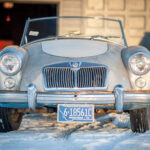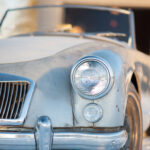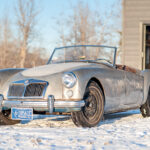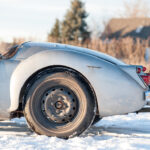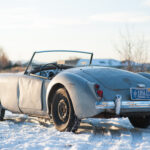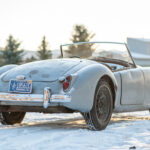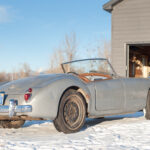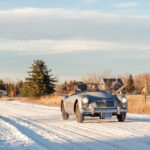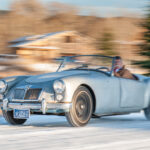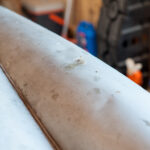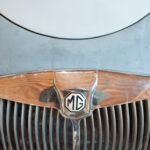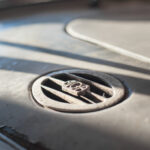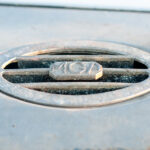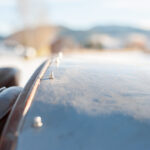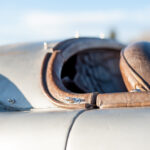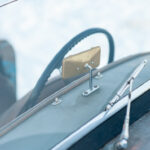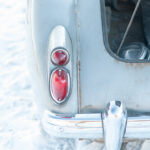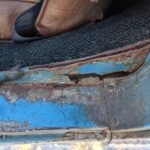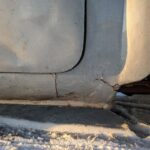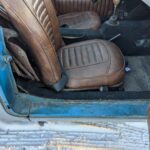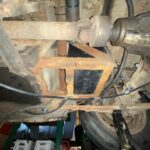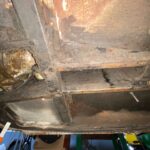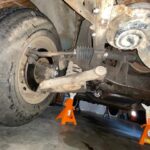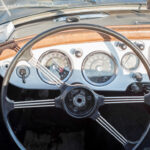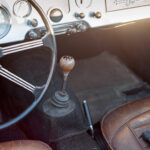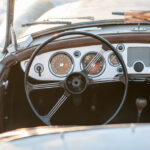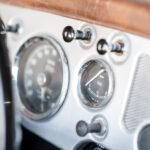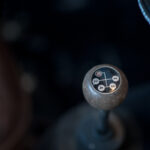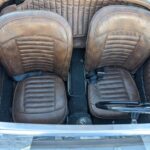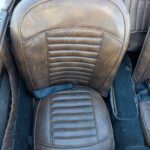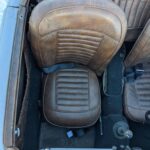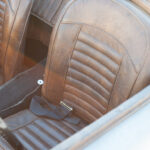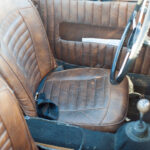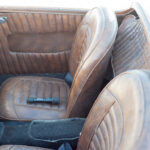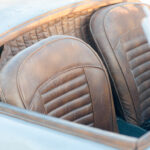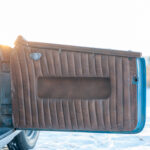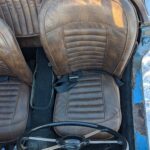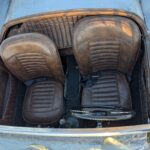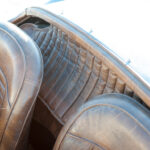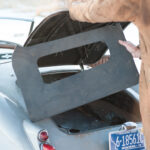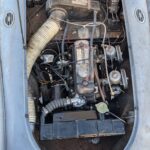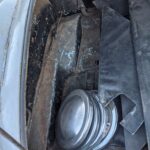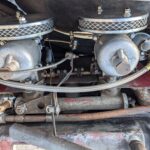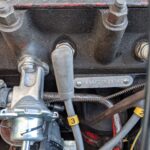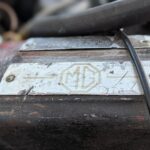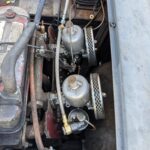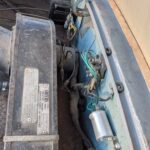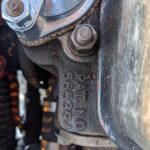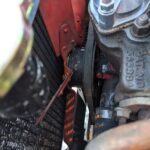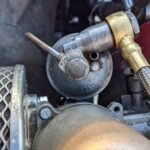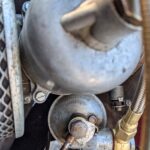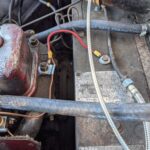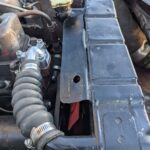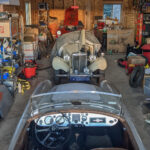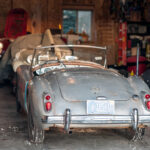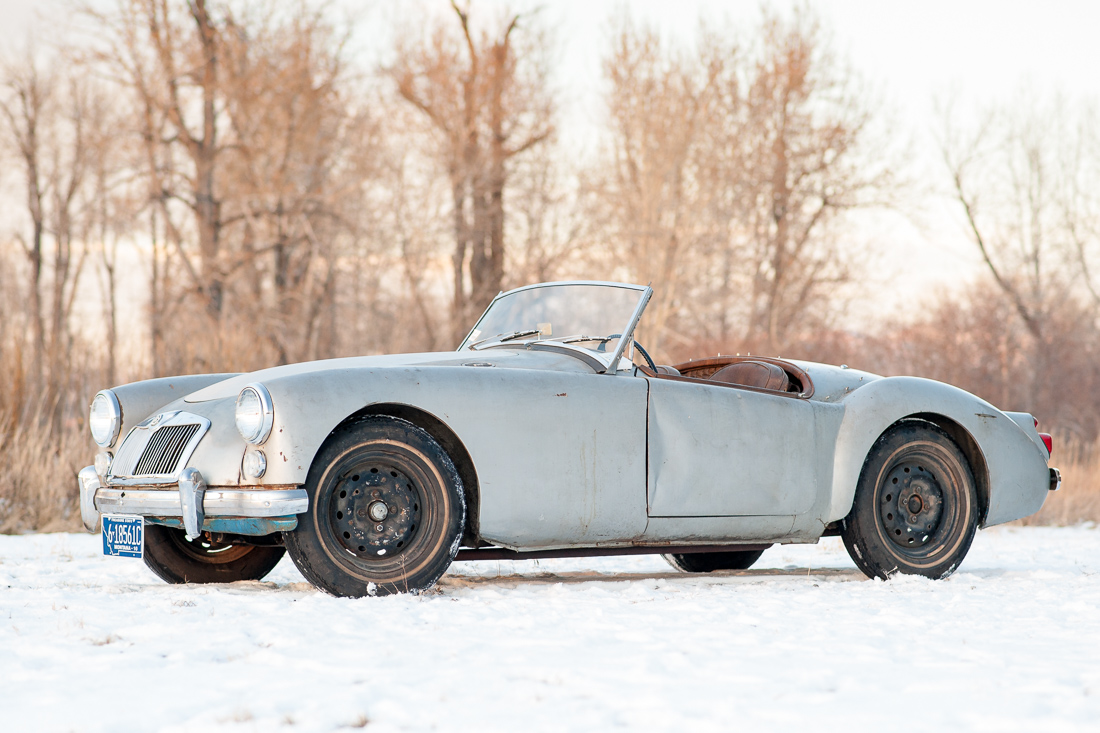
Revo Model Summary: MGA
From the 1956 model year through 1962, the British Motor Corporation (BMC) produced the MGA Roadster. Although other BMC offerings were sold under multiple brands, all MGAs were "MG" badged. As a bridge between the cycle-fendered TF and the decidedly more modern MGB which carried MG into the 1980s, the MGA serves as perfect platform to enjoy pure open top British motoring in a usable package. Engine, brake and chassis updates occurred throughout its life cycle, including 1500, Twin-Cam, and 1600 variants. Showcased here is a 1960 1600 (NA Market).


If the essence of the British roadster is motoring harmony, then the MGA 1600 is its embodiment. The light curb weight is in balance with the modest power; the elegant lines of the bodywork serve purposeful ends; and any feature not dedicated to driving enjoyment is relegated to an afterthought. For example, take a close look at the doors. Nope, no handles. Only a small cable pull tucked into the door card, on the inside. Door handles were probably extraneous to the designers because they didn’t make driving better. The lack of door handles is emblematic of balanced design: purposeful, cost effective, and simple weight savings that also makes for a clean and elegant aesthetic. And while the design team famously doted on the bodywork on the MGA, the soft top looks like it got less attention than a fifth child after twins. Why? Well, driving is more fun with the top off.
In illustrative contrast, when Americans caught a hold of the British roadster they added cylinders, bored out displacement, flared the fenders, and generally traded small but sonorous motors for fire breathing dragons. Lithe and balanced momentum machines were converted into widow making tire shredders. As enthusiasts we’re glad for the extremes of the 427 Cobra, Sunbeam Tiger, and Bristol Fighter (remember that one, with the Viper V10 stuffed in front like an overfilled sausage?). But while those examples exist on the poles of automotive design, the classic British roadster we see here exemplifies the middle ground, or more accurately put, motoring harmony.
If you are a fan of the British roadster and looking for an excellent starting point for your next project, an MGA such as this one is a fine choice. Equally, the beautiful lines of the MGA can still return a class win at a concours, and when sorted they are driving bliss. The example shown here is a 1960 MGA 1600 Mark I, running and road legal, barely.

This MGA has a great story, too. It was rescued from the depths of a midwestern barn about 2 years ago. Prior to it's rescue, the car was last driven around 1984 (judging by the Kansas plates). It was left in agrarian purgatory by a prior owner, a college student who apparently traded garage space for his own labor. After a short time he left school and abandoned the car where it remained unused in storage for nearly 35 years. It was bought by a dyed-in-the-wool MG enthusiast. He brought it back to running and driving condition, although it still has plenty of needs.
A valuable tool in the MG collecting world is the the MG Heritage Certificate. Issued by the British Motor Industry Heritage Trust, that organization has an archive of the original factory records created by British automotive manufacturers, including Aston Martin, Austin, BMC, British Leyland, Land Rover, MG, Morris, Riley, Rover, Standard, Triumph and Wolseley. A certificate can ben created from these archives for a fee. It shows build date, paint, interior, engine, trans, and other options, and can be either a valuable tool to restore to original spec, or demonstrate provenance and accuracy. Find one at the British Motor Museum website.
The certificate for this example (see gallery, below) shows that it was originally painted in Iris Blue, with black leather, and a blue top. Remnants of the Iris Blue paint can also be seen in the trunk and the door sills. So this has clearly has been reupholstered in brown leatherette, and the upholstery was done in the coupe style (horizontal trim). Roadsters such as this came with vertical stitching. You can see this is a left hand drive North American market car. It is #97749 out of about 104,000 MGA 1600s made world wide, meaning it came very near the tail end of production, likely a September build, with the last 1600s rolling off the line in March of the following year. It is not known whether the engine and transmission are original. But whether original or not, it shows an appropriate engine, carbs (twin SUs), and transmission for a 1960 MGA 1600. The matching number plate on the engine was an addition by a prior owner, and is not original but it does show the original position and look. Evidence suggests that the car was restored by a prior owner sometime in the 1970s.

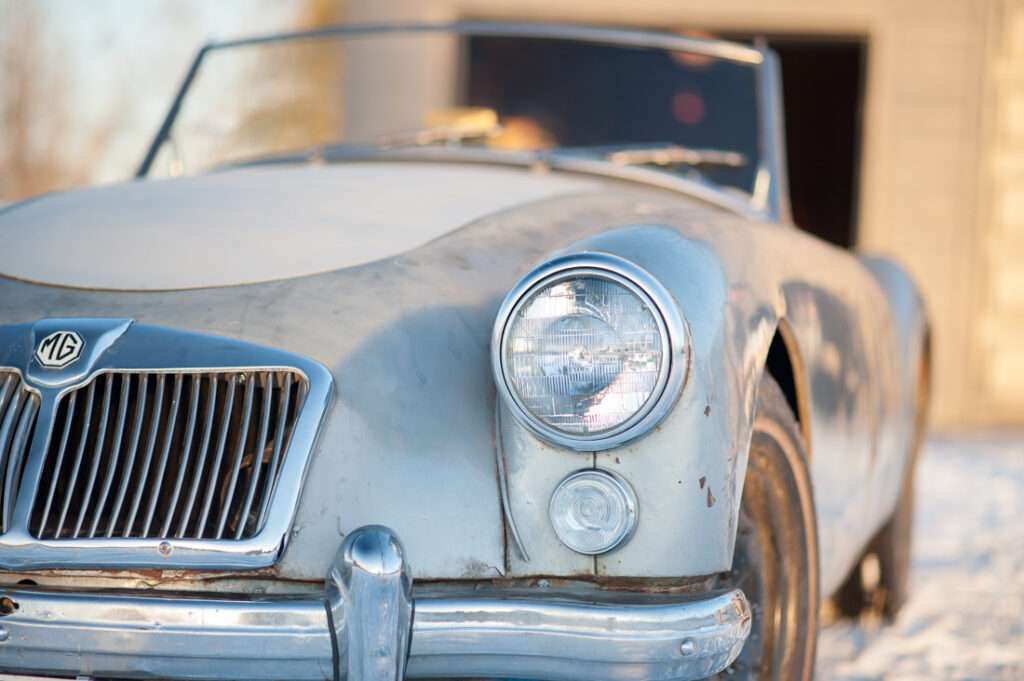
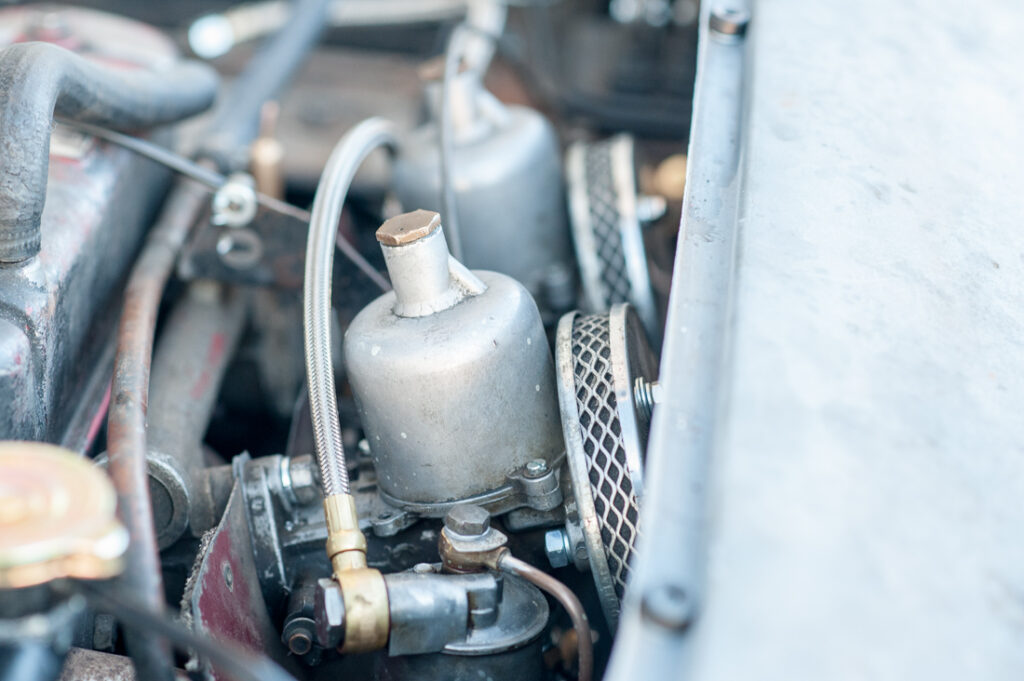
Work to bring this back to running and driving condition is typical for this model, and included:
- Rebuilt carbs (twin SUs);
- New/used dashboard (metal finish);
- New dash switches;
- New front calipers and rear cylinders;
- Rebuilt master cylinder;
- Fresh fluids;
- New clutch slave;
- Drain and refill of steering rack fluid;
- Refresh and refurbish of the electrical system;
- Addition of fuel filter (premium ethanol free);
- New parking brake cable;
- New tonneau cover;
- New/used windscreen hardware;
- New windshield glass and rubber;
- New wipers with rebuilt wiper motor;
- Refreshed lighting with new:
- front parking lights;
- headlamp pots;
- brake lamps and wiring; and
- Rear turn signal lamps.
- New front and rear bumpers;
- Used hood installed; and
- New seatbelts.



Remaining needs are also typical, and include:
- Body work (note corrosion on door/rocker sills);
- New tires (tires shown are well past expiration, 165/80B (biased ply))
- New water pump and radiator rebuild;
- New speedo cable;
- New seal(s) on transmission;
- Front shock rebuild or replacement; and
- New jack and lug wrench (spare is in trunk)
While this motor runs well, experts say that even a strong running 1600 will likely require a rebuild with hardened valve seats (for unleaded fuel) as a part of any future restoration.
Non original additions by a prior owner include the silver paint, reupholstered seats (brown instead of original black, and coupe not Roadster style), later MGB style harmonic balancer on the pulley, a custom manifold, and metal floorboards in lieu of the original wood.
There is excellent after market support for these cars. Any of the parts needed can be purchased directly from Moss Motors or through one of its distributors, as well as great marque sites like MGA Guru. A 330 page Workshop Manual in searchable .pdf form will also convey with the sale
The video below shows the car running and driving (note: video shot for recent sale, car is no longer available for sale through Revo Garage), and more than 100 photos are included in the gallery at the bottom.
If you have any questions or would like to feature or sell your enthusiast car on Revolving Garage please contact us at info@revogarage.com.

